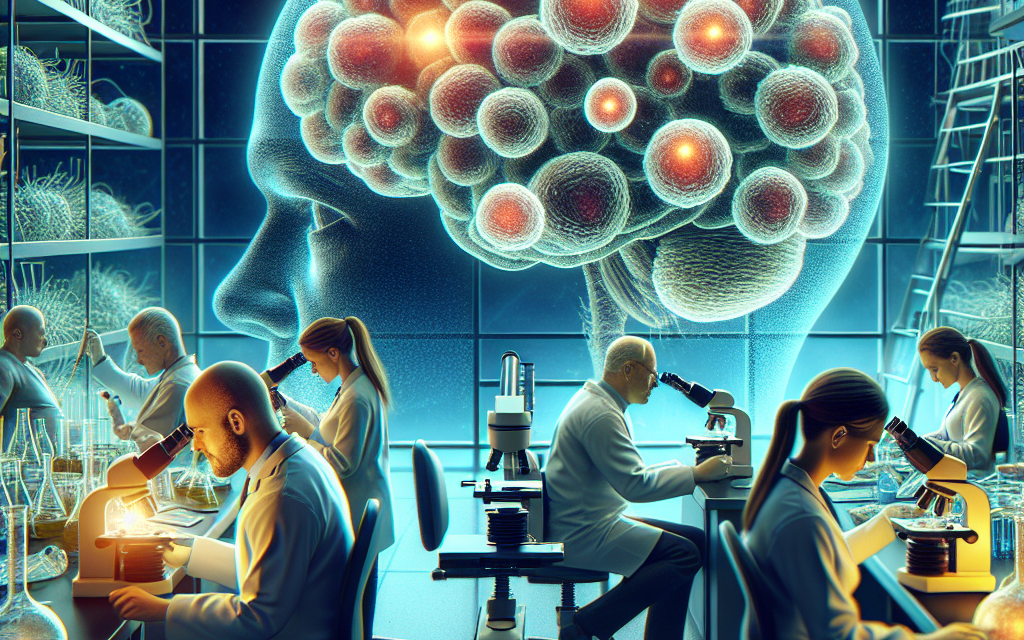Breakthroughs in Stem Cell Research: Paving the Way for Regenerative Neurotherapy
Stem cell research has emerged as one of the most promising fields in modern medicine, particularly in the realm of neurotherapy. With the potential to regenerate damaged tissues and restore lost functions, stem cells are at the forefront of innovative treatments for neurological disorders. This article delves into the breakthroughs in stem cell research that are paving the way for regenerative neurotherapy, exploring the science behind stem cells, their applications in treating neurological conditions, ethical considerations, and future prospects.
Understanding Stem Cells: The Building Blocks of Regeneration
Stem cells are unique cells capable of developing into various cell types in the body. They serve as a repair system for the body, with the ability to divide and differentiate into specialized cells. There are two primary types of stem cells: embryonic stem cells (ESCs) and adult stem cells (ASCs).
Types of Stem Cells
- Embryonic Stem Cells (ESCs): Derived from early-stage embryos, these cells are pluripotent, meaning they can differentiate into any cell type in the body. Their versatility makes them a focal point in regenerative medicine.
- Adult Stem Cells (ASCs): Found in various tissues, including bone marrow and brain, ASCs are multipotent, meaning they can develop into a limited range of cell types. They play a crucial role in tissue maintenance and repair.
- Induced Pluripotent Stem Cells (iPSCs): These are adult cells reprogrammed to an embryonic-like state, allowing them to differentiate into any cell type. iPSCs have revolutionized research by providing a source of pluripotent cells without the ethical concerns associated with ESCs.
The unique properties of stem cells make them invaluable for research and therapeutic applications. Their ability to self-renew and differentiate into specialized cells is essential for developing treatments for various neurological disorders, including Parkinson’s disease, Alzheimer’s disease, and spinal cord injuries.
Mechanisms of Action in Neurotherapy
Stem cells exert their therapeutic effects through several mechanisms:
- Cell Replacement: Stem cells can replace damaged or lost neurons, restoring function in affected areas of the brain or spinal cord.
- Neuroprotection: Stem cells release neurotrophic factors that protect existing neurons from degeneration and promote survival.
- Modulation of Inflammation: Stem cells can modulate the immune response, reducing inflammation that often exacerbates neurological conditions.
- Regeneration of Supportive Cells: Stem cells can differentiate into glial cells, which support and protect neurons, enhancing overall brain health.
Understanding these mechanisms is crucial for developing effective therapies that harness the power of stem cells to treat neurological disorders.
Recent Breakthroughs in Stem Cell Research
Recent advancements in stem cell research have opened new avenues for treating neurological disorders. These breakthroughs have been driven by technological innovations, improved understanding of stem cell biology, and successful clinical trials.
1. Advances in Stem Cell Technology
Technological advancements have significantly enhanced the ability to manipulate and utilize stem cells for therapeutic purposes. Techniques such as CRISPR gene editing, 3D bioprinting, and advanced imaging have transformed the landscape of stem cell research.
- CRISPR Gene Editing: This revolutionary technology allows scientists to edit genes with precision, enabling the correction of genetic defects in stem cells. For instance, researchers have used CRISPR to correct mutations in iPSCs derived from patients with genetic neurological disorders, paving the way for personalized therapies.
- 3D Bioprinting: This technique enables the creation of complex tissue structures using stem cells. Researchers have successfully printed neural tissues that mimic the architecture of the brain, providing a platform for studying neurological diseases and testing potential therapies.
- Advanced Imaging Techniques: Innovations in imaging technologies, such as MRI and PET scans, allow for real-time monitoring of stem cell therapies in patients. This capability enhances our understanding of how stem cells integrate into existing tissues and their long-term effects.
These technological advancements have not only improved the efficiency of stem cell research but have also accelerated the translation of findings from the lab to clinical settings.
2. Clinical Trials and Success Stories
Clinical trials are essential for evaluating the safety and efficacy of stem cell therapies. Several recent trials have shown promising results in treating neurological disorders.
- Parkinson’s Disease: A clinical trial conducted by the University of California, San Diego, involved transplanting dopaminergic neurons derived from iPSCs into patients with Parkinson’s disease. Preliminary results indicated significant improvements in motor function and quality of life.
- Spinal Cord Injury: Researchers at the University of Miami conducted a trial using neural stem cells to treat patients with spinal cord injuries. The results showed improved motor function and sensation in some patients, highlighting the potential of stem cells in regenerative neurotherapy.
- Alzheimer’s Disease: A study published in the journal “Nature” demonstrated that transplanting neural progenitor cells derived from iPSCs into animal models of Alzheimer’s disease improved cognitive function and reduced amyloid plaque accumulation.
These success stories underscore the potential of stem cell therapies to revolutionize the treatment of neurological disorders, offering hope to millions affected by these conditions.
3. Ethical Considerations in Stem Cell Research
While the potential of stem cell research is immense, it is accompanied by ethical considerations that must be addressed. The use of embryonic stem cells raises significant ethical questions regarding the moral status of embryos.
- Embryonic Stem Cells: The extraction of ESCs involves the destruction of embryos, leading to debates about the ethical implications of such practices. Advocates argue that the potential benefits to humanity outweigh the ethical concerns, while opponents emphasize the sanctity of human life.
- Informed Consent: Ensuring that donors of stem cells, particularly iPSCs, provide informed consent is crucial. Researchers must be transparent about how the cells will be used and the potential risks involved.
- Equity in Access: As stem cell therapies become more prevalent, ensuring equitable access to these treatments is essential. There is a risk that only affluent patients may benefit from advanced therapies, exacerbating existing health disparities.
Addressing these ethical considerations is vital for the responsible advancement of stem cell research and its applications in neurotherapy.
4. The Role of Stem Cells in Neurodegenerative Diseases
Neurodegenerative diseases, such as Alzheimer’s, Parkinson’s, and multiple sclerosis, pose significant challenges to healthcare systems worldwide. Stem cell research offers potential solutions for these debilitating conditions.
- Alzheimer’s Disease: Research has shown that stem cells can differentiate into neurons and glial cells, potentially replacing lost cells in Alzheimer’s patients. Studies indicate that stem cell-derived neurons can integrate into existing neural circuits, restoring cognitive function.
- Parkinson’s Disease: The loss of dopaminergic neurons in the substantia nigra is a hallmark of Parkinson’s disease. Stem cell therapies aim to replace these lost neurons, with clinical trials demonstrating promising results in restoring motor function.
- Multiple Sclerosis: Stem cells have the potential to regenerate myelin, the protective sheath around nerves that is damaged in multiple sclerosis. Research is ongoing to explore the efficacy of stem cell transplantation in promoting myelin repair and improving neurological function.
The application of stem cells in treating neurodegenerative diseases represents a paradigm shift in how we approach these complex conditions, moving from symptomatic treatment to potential cures.
5. Future Directions in Stem Cell Research and Neurotherapy
The future of stem cell research and its applications in neurotherapy is bright, with ongoing research aimed at overcoming current challenges and expanding therapeutic options.
- Personalized Medicine: The development of iPSCs allows for personalized therapies tailored to individual patients. By using a patient’s own cells, researchers can create customized treatments that minimize the risk of rejection and improve efficacy.
- Combination Therapies: Future research may focus on combining stem cell therapies with other treatment modalities, such as gene therapy or pharmacological interventions, to enhance therapeutic outcomes.
- Long-term Safety Studies: As stem cell therapies advance, long-term safety studies will be essential to monitor potential adverse effects and ensure patient safety.
- Regulatory Frameworks: Establishing clear regulatory frameworks for stem cell therapies will be crucial for ensuring ethical practices and patient safety as the field continues to evolve.
By addressing these future directions, researchers can continue to unlock the full potential of stem cells in regenerative neurotherapy, offering hope for millions affected by neurological disorders.
Conclusion
Breakthroughs in stem cell research are paving the way for transformative advancements in regenerative neurotherapy. From understanding the unique properties of stem cells to exploring their applications in treating neurodegenerative diseases, the field is rapidly evolving. While ethical considerations and challenges remain, the potential benefits of stem cell therapies are immense. As research continues to progress, we stand on the brink of a new era in medicine, where stem cells may hold the key to curing some of the most debilitating neurological conditions. The journey ahead is filled with promise, and the ongoing commitment to ethical research and innovation will be crucial in realizing the full potential of stem cells in neurotherapy.





